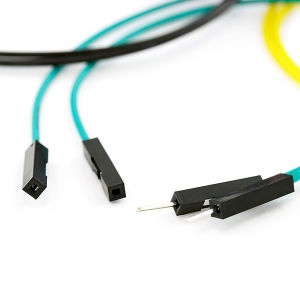 Our Nwazet Data Acquisition module (DAQ for short) is designed for Netduino Go! users looking for a simple, cost-effective platform for integrating analog and digital I/Os, off-the-shelf I2C sensors, time tracking, SDHC storage (up to 16GB) and serial communications to their projects.
Our Nwazet Data Acquisition module (DAQ for short) is designed for Netduino Go! users looking for a simple, cost-effective platform for integrating analog and digital I/Os, off-the-shelf I2C sensors, time tracking, SDHC storage (up to 16GB) and serial communications to their projects.
When we set out to design the DAQ module 5 months ago, we put a great deal of thought into the real-world scenarios shared by our customers when Netduino Go! launched and how many wanted to apply the power of the .Net Micro Framework in the context of rapid system prototyping, light industrial control systems, home automation, hydroponic growing systems, security systems, UAVs, robots and of course, Internet-connected devices.
The first design choice we made was to choose an extremely robust spring-loaded wire connection system, providing power, data and ground on every port where they’re needed. On ports that are 5v and 3.3v tolerant, both power types are available. Because each wire is held securely in its place with strong springs that can only be released by applying pressure with a very small screwdriver, communications are more reliable and power to sensors and analog devices is more stable than in conventional systems using female pin headers. In addition, our spring-loaded wiring system enabled us to design a smaller and lighter board than would have been possible with screw connectors.
Our second design choice was to enable our customers to leverage the large array of existing I2C-compliant sensors on the market today without having to wait long development cycles for similar Go! modules to be brought to market. To this end, we have partnered with Adafruit to provide a variety of useful I2C sensors that work ‘out-of-the-box’ with our DAQ module in order to help you get started quickly with your designs. We are also committed to developing a comprehensive driver library for popular sensors from Adafruit and other vendors over time.
Our third design choice was to place user-controllable status LEDs on each I/O port of the DAQ module, allowing for a simple and effective method of providing user feedback from an application at no additional cost and without consuming the DAQ’s digital I/Os for that purpose alone. We also embedded extensive sub-system diagnostics into the DAQ, available on-demand, in plain English through the serial port to help with troubleshooting issues in the field as well as easing the development of custom application drivers.
Our final design choice was to provide a complete, easy to hack system, with SDHC storage, a real-time clock, optional external power, and above all, capable of being used as a stand-alone 48Mhz ARM-Cortex M0 micro-controller programmable in C/C++ using a standard 0.1″ JTAG/SWD pin header. In fact, an STM32F051 Discovery board, costing less than $10, was used for its embedded STLink/V2 interface throughout the entire development of the DAQ module firmware.
We believe that you’ll find this module extremely useful in unlocking the full potential of Netduino Go! and building amazing applications right now. We also have a feature road map for the DAQ module and you can expect to see more smart functions, performance improvements and your very own feedback embedded in upcoming versions of the firmware. Last but not least, the DAQ module will be ready to leverage Go!Bus protocol advancements when the time comes.
You can find in-depth specifications about the Nwazet DAQ module on our site.
Cheers,
-Fabien.



























